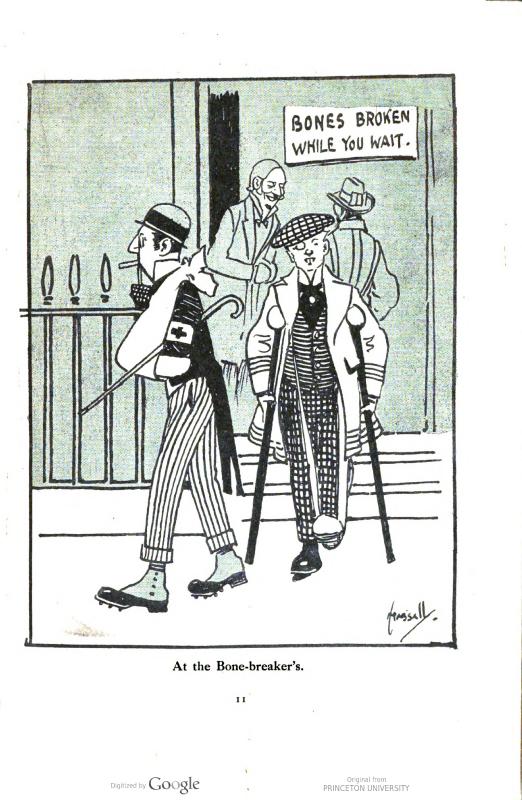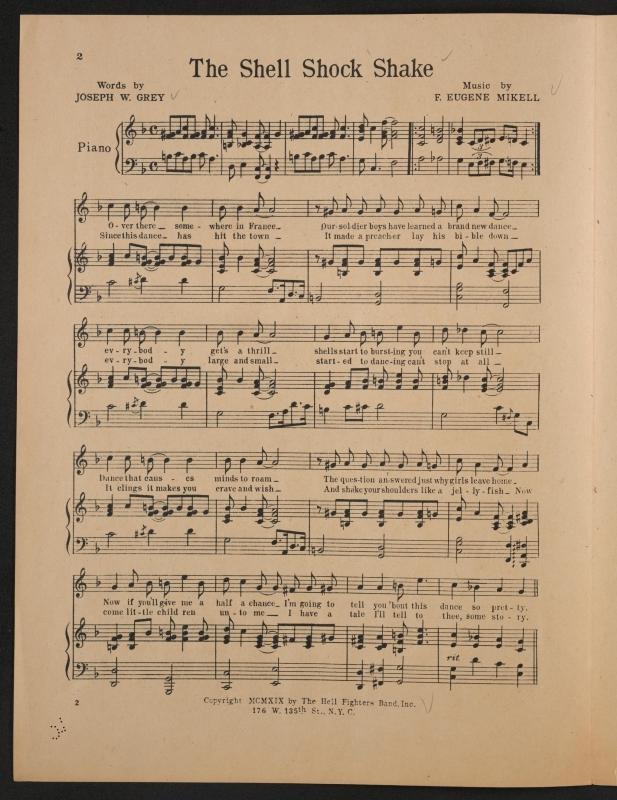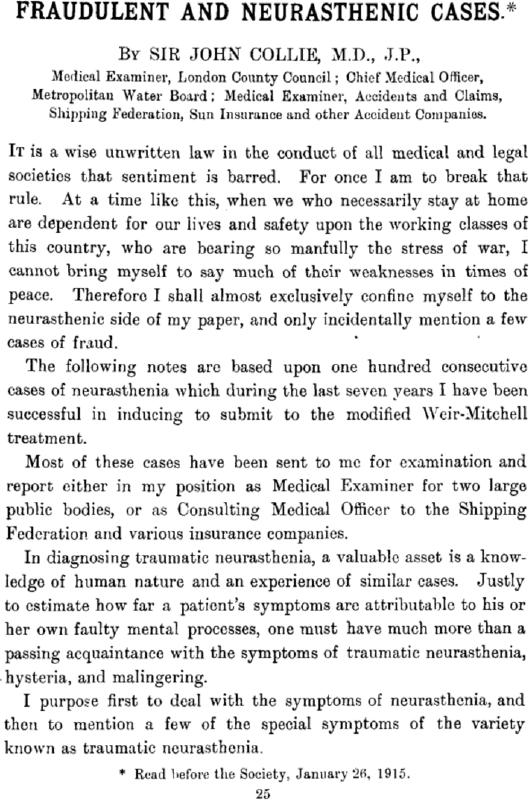Popular Culture and Attitudes Towards Shell-shock as Disability
As an invisible disability, shell-shock proved confusing for officers and doctors to address at the front. Allegations of malingering were common, and prevented soldiers from receiving treatment.
On January 27, 1915, one of the first articles to name war neurasthenia in The Times of London was a report on a speech by John Collie, entitled “Fraudulent and Neurasthenic Cases.” In this speech, Collie portrays neurasthenia as a disorder produced by self-delusion and genetics: “nine-tenths of the subjective symptoms were the result of auto-suggestion.” which he cedes to the “limited” intelligence of “working-class people” (5). In Collie’s estimation, neurasthenia is the “voluntary surrender… of all will-power,” and as such, is difficult to untangle from malingering (5). Before the war, Collie had been a part of civilian pensions boards, finding instances of malingering in factories and in other areas where mechanized labor was common.
In the 1916 special war edition of Punch Almanack, titled Keep Smiling! More News by Liarless for German Homes, a cartoon by John Hassall satirizes the practice of physical mutilation in order to desert from war, with a caption that reads: “Almost the only persons who are making a respectable income in London now are the bone-breakers. Young men are flocking in their thousands to doctors who make a specialty of breaking a leg, or an arm, or even a neck, in order to make them of no use to the press gang.” The accompanying cartoon depicted men leaving a doctor’s office on crutches and bandaged, while in the background, a doctor leans insidiously towards a third man. The sign over the door reads “bones broken while you wait.” While this cartoon is intended as a parody, on the front lines, voluntary or involuntary attempts to elude military service presented the threat of treason.
Similarly, the "Shell-shock Shake," a score for ragtime music published by the New York Hellfighters, satirizes the stereotypic movements of those diagnosed with shellshock.
Together, these popular culture items demonstrate an attitude of suspicion towards disability, especially shell-shock as a disability. This suspicion was reflected in popular culture through satire and parody.


